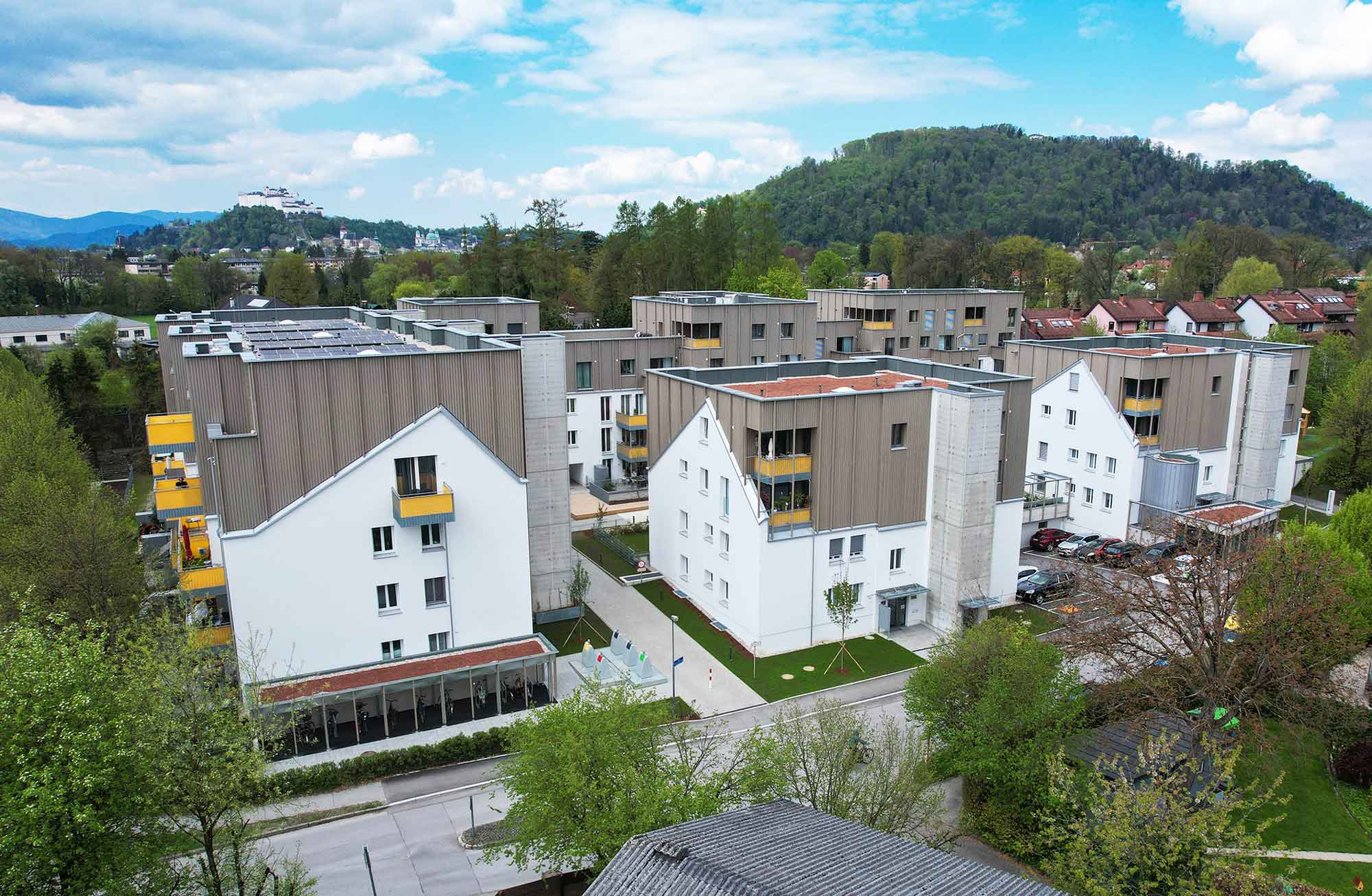A pioneering concept in social housing has been implemented with the renovation and redensification of a 1980s housing complex in Salzburg’s Aigen district. The developer, Heimat Österreich, wanted to combine high standards of climate protection and quality of life while creating affordable places to live.1 The project was supported with scientific expertise, and optimised solutions were developed within the scope of several research projects (“ZeCaRe I”, “ZeCaRe II” and “ZECAMO – Sustainable Mobility in Practice”).2 Key objectives for all measures included keeping costs under control and giving ideal consideration to the social needs of the residents. The existing buildings within the complex were not merely renovated, they were also expanded. By adding floors it was possible to increase from the previous 75 units to the current 99 units. The overall concept also involved designing extensive open spaces for the housing estate and introducing an innovative mobility concept.
ZeCaRe-Monitoring
The monitoring project that has recently been launched is focusing on evaluating the technical innovations (heat, electricity, water, buildings, etc.). As well as being communicated to stakeholders and residents of Friedrich-Inhauser-Straße, the results are also available for the planning of renovation projects in other districts. Another significant element in the project is process monitoring, which involves studying the previous, current and future workflows in the building of (subsidised) housing and, likewise, furnishing data that can be used in subsequent projects. The method analyses what strategies, concepts and measures will be needed so that the processes applied can be implemented in future district-level renovation projects. Findings into the areas of mobility and social aspects from previous projects will be incorporated and combined with the results of technical and process monitoring.

Initial results
Some calibration and coordination work with the energy supplier and the residents was required first of all in respect of the monitoring system installed so that the results would meet the strict privacy and data protection requirements. Three 14-day series of measurements of air quality (temperature, CO2 content and relative humidity) were taken in individual households to serve as examples. The chart above shows the level of comfort in one of the households based on these measurements. This home achieves some very good figures thanks to the living space ventilation. Initial results on the use of the electric car sharing scheme have also been released: capacity utilisation has remained stable since autumn 2022 at over 30%. An increase in double-booking necessitated the addition of a second car, which was recently made available.
www.smartcities.at/projects/zecare-monitoring
1 vgl. Artikel in EIA-Ausgabe 4/2022:
https://www.energy-innovation-austria.at/article/wir-inhauser-salzburg/?lang=en
2 Project partners: Salzburg Institute for Regional Planning and Housing (SIR); Heimat Österreich, Gemeinnützige Wohnungs- und Siedlungsgesellschaft mbH, municipality of Salzburg, MA 05 Regional Planning and Construction Authority, MA06 Building Directorate and MA03 Social Affairs, Stadt Land Berg, Rosemarie Fuchshofer, FH Salzburg University of Applied Sciences – Smart Buildings in Smart Cities, FAMILY OF POWER SCE mbH – a European Cooperative Society
